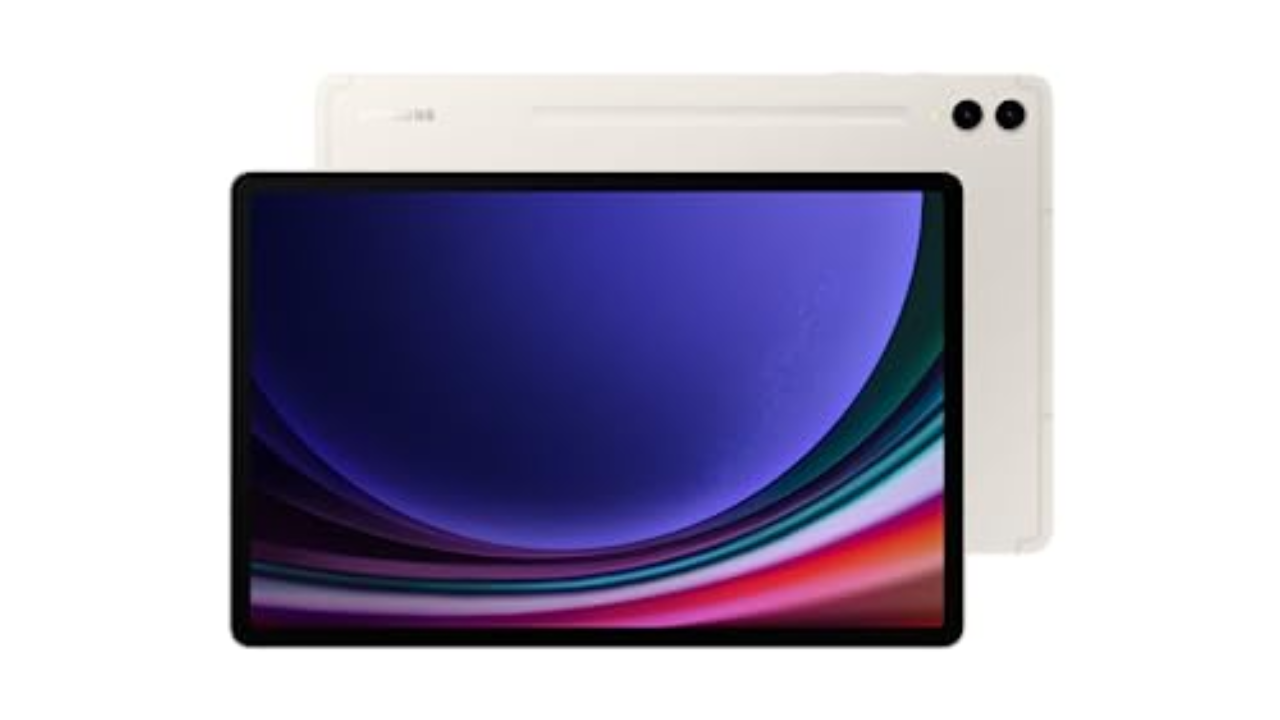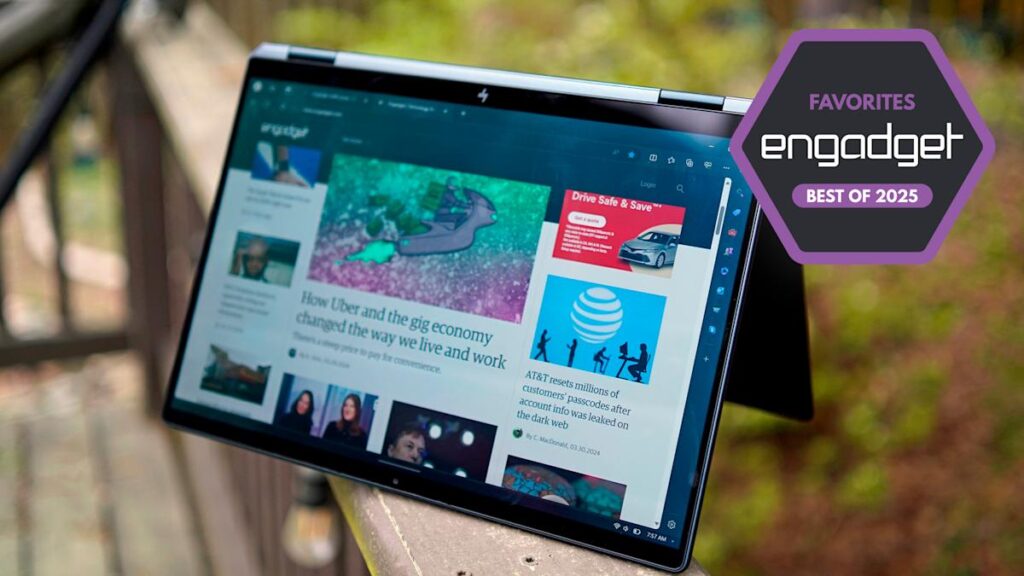While the excitement around 2-in-1 systems has cooled a bit over the years, they’re still useful solutions for anyone who wants a device that can act as both a tablet and a traditional laptop. In tablet mode, they’re handy for jotting down notes and drawing pictures, and in their full laptop configurations, they can let you manage e-mail and write as you would with a traditional notebook. Whether you’re a student, creative or just want a more flexible setup, a 2-in-1 solution gives you the best of both worlds without having to carry multiple devices.
We’ve tested and reviewed some of the top 2-in-1 options out there from brands like HP, Microsoft, Samsung and Apple. Whether you’re looking for a Windows PC that can occasionally act like a tablet, or traditional slates that can be empowered with keyboard accessories, we’ve rounded up the best models to consider.
Factors to consider before buying a 2-in-1 laptop
When you’re shopping for a 2-in-1 system, there are some basic criteria to keep in mind. First off, consider the type of machine you’re looking for. Do you want something that can look like a traditional Windows laptop, but also has a screen that can twist into different orientations? (We often call these convertibles.) Or do you want a standalone tablet that works with a separate keyboard attachment? Tablet setups are typically lighter, but they’re often harder to use on your lap since they rely on kickstands or awkward cases.
Also, while some 2-in-1s offer built-in LTE or 5G connectivity, not everyone will want to pay the premium for it. An integrated cellular radio makes checking emails or replying to messages on the go far more convenient. But it also often costs more — and that’s on top of what you’ll pay for data. And as for 5G, you can hold off on it unless you live within range of a mmWave beacon. Coverage is still spotty and existing nationwide networks use the slower sub-6 technology that’s barely faster than LTE. For now, tethering a PC to your phone is still the best way to get online.
When it comes to tablet keyboards, you’ll also have to make peace with the fact that they’ll never feel as responsive as full-fledged laptop options. Their keys are shallower, and their layouts are often a bit different than typical PCs. Again, there’s a cost for portability.
See Also:
Sometimes, getting a third-party tablet keyboard might be just as good, and they’re often cheaper than first-party offerings. If you’re looking to save some money, Logitech’s Slim Folio is an affordable option for iPads, and if you don’t need your keyboard to attach to your tablet, Logitech’s K780 Multi-Device wireless keyboard is also a good pick.
While we’ve typically made sure to include a budget 2-in-1 in previous years, this time there isn’t a great choice. We would usually pick a Surface Go, but the latest model is still too expensive. Other alternatives, like cheaper Android tablets, are underpowered and don’t offer a great multitasking interface. If you want something around $500 that’s thin, lightweight and long-lasting, you’re better off this year looking at a traditional laptop (like those on our best budget PCs list). Alternatively, you might consider one of our top picks for the best Chromebooks, either as a back-to-school option or for basic tasks.
Best 2-in-1 laptops
Photo by Devindra Hardawar / Engadget
Display: 14-inch OLED touchscreen | CPU: Intel Core Ultra 5 125H | Weight: 3.19 pounds | RAM: Up to 32GB | Storage: Up to 2TB
Read our full HP Spectre x360 14 review
HP’s new Spectre x360 14 is our new top pick if you want a laptop that can occasionally turn into a tablet. It’s a beautiful notebook that can rotate its screen into a variety of orientations: a tent mode for propping it up in bed or on a table and a tablet mode with the keyboard tucked away neatly behind the lid. While it wouldn’t completely replace something like an iPad, the x360’s rotating hinge makes it more versatile than a conventional notebook. It’s perfect for diving into a lengthy article or PDF or using the bundled stylus to jot down some notes. If you’re looking for a solid back to school option with the Windows operating system and touch display, it’s a great choice.
The Spectre x360 14 is also a solid laptop in its own right, with an excellent keyboard, an extra-large touchpad and some of the best PC industrial design on the market. And with a 512GB SSD (configurable up to 2TB), there’s plenty of room to store all of your files and photos. It even boasts two Thunderbolt 4 ports with USB-C connectivity so you can connect multiple devices.
$1,449+ at HP
Nathan Ingraham for Engadget
Display: 11- or 13-inch 120Hz tandem OLED XDR touchscreen | CPU: Apple M5 | Weight: Starting at 0.98 pounds | RAM: Up to 16GB | Storage: Up to 2TB
Read our full Apple iPad Pro (M5) review
In a lot of ways, the iPad Pro M5 is overkill for most. It has Apple’s newest M5 chip and one of the best screens you can get — a Tandem OLED panel with a 120Hz refresh rate, not to mention support for both touch and stylus input. It’s also available in two sizes (11 and 13 inches), so you get some control over how portable you need it to be. If you really want a tablet that can replace a laptop, this is as good as it gets, particularly on this side of the Apple vs. Android/Windows divide.
This generation of the iPad Pro is also shockingly thin and light, so it’ll basically disappear into your bag without adding a ton of heft. Meanwhile, Apple’s Magic Keyboard is sleeker than before while also featuring a larger trackpad and a very handy row of function keys. The only real downside is price, with the smaller, 11-inch model starting at $999, and the 13-inch model starting at $1,299. And that’s before you factor in the cost of things like additional storage or accessories. But if you’ve got the cash and want a top-of-the-line tablet, it’s hard to go wrong with the iPad Pro M5.
Alternatively, if you appreciate what the iPad Pro can do but don’t want to shell out quite that much money, the iPad Air is a more affordable option. We consider it to be the best iPad for most people. Its screen isn’t as nice and it’s not quite as svelte. But its M3 chip is more than enough power for most, and Apple improved its Magic Keyboard accessory recently. Critically, it also costs nearly half the price with the 11 and 13-inch models starting at $599 and $799, respectively. — Nathan Ingraham, Deputy Editor
$1,249 at Amazon

SAMSUNG
Display: 12.4-inch Dynamic AMOLED 2X touchscreen | CPU: Snapdragon 8 Gen 2 | Weight: 1.3 pounds | RAM: Up to 12GB | Storage: Up to 512GB
Read our full Samsung Galaxy Tab S9 Ultra review
While Windows is better than iPadOS and Android for productivity, it lags when it comes to apps specifically designed for touchscreens. If you want a tablet that has all the apps you want, and only need it to occasionally double as a laptop, the Galaxy Tab S9+ is a solid option. You’ll enjoy watching movies and playing games on its gorgeous 12.4-inch 120Hz AMOLED screen, and Samsung includes the S Pen, which is great for sketching and taking notes. The Snapdragon 8 Gen 2 chip and 12GB of RAM (4GB more than the last model) keep things running smoothly, too.
Samsung dramatically improved its keyboard case a few years ago for the S7+, making the Tab an even better laptop replacement. You could type for hours on this thing and not hate yourself (or Samsung). The battery life is also excellent, so you won’t need to worry about staying close to an outlet. The main caveat is that Android isn’t great as a desktop OS. And while Samsung’s DeX mode offers a somewhat workable solution, it has plenty of quirks. Similarly, by choosing a 2-in-1 that’s primarily a tablet, you do forgo a wealth of connectivity options that you’d otherwise get with a laptop.
$773 at Amazon
Photo by Devindra Hardawar / Engadget
Display: 13-inch OLED touchscreen | CPU: Snapdragon X Plus/X Elite | Weight: 1.97 pounds | RAM: Up to 32GB | Storage: Up to 1TB
Read our full Microsoft Surface Pro Copilot+ review
The Surface Pro is everything we’ve wanted the Surface tablet line to be for years. It’s incredibly fast and efficient, thanks to Qualcomm’s new Snapdragon X Elite and Plus chips. Its neural processing unit (NPU) also enables potentially powerful AI features, though the current crop won’t be useful to everyone. We’re also still waiting to see Microsoft’s controversial Recall feature in action, which has been delayed to address its many security concerns.
The new OLED screen option looks wonderful: It makes colors pop off the screen and also ensures inky dark black levels. Coupled together with surprisingly powerful speakers, the Surface Pro is a solid option for watching video on the go. Its versatility is one of the many reasons the Surface Pro made it onto our list. Pair that with its portability thanks to its small form factor, and you have an excellent pick.
When it’s paired together with the new Surface Pro Flex keyboard ($350), you can type and mouse around the Surface completely wirelessly, which opens up entirely new ways of using it. As long as there’s a small table nearby, or somewhere to prop up the tablet, you can work with just a thin and light keyboard on your lap. If you’re looking for a business laptop that’s lightweight and doesn’t have a huge screen size that will weigh you down, the Surface Pro is one you should consider. It’s also nice to see Microsoft pack in 16GB of RAM with the base Surface Pro model.
While we’d still like to see the company bundle in a keyboard and refine its kickstand, the Surface Pro remains one of the most innovative PCs available today.
$999 at Microsoft
Recent updates
October 2025: Updated to include the latest iPad Pro.
February 2025: We’ve retitled this guide to “Best 2-in-1 laptops and tablets” to be more accurate, and we’ve also updated the introduction and “Factors to consider” section to refer to convertible laptops and detachable tablet options.
June 2024: We updated our top picks to include the Microsoft Surface Pro Copilot+ edition.
Nathan Ingraham contributed to this report.


